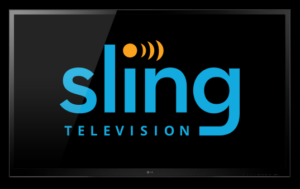The most notable news to come out of this years Consumer Electronics Show CES (and perhaps in hindsight the past ten years of CES events) was the somewhat muted announcement that ESPN will soon be available to US viewers without a PayTV subscription. To some, including this analyst, it signals the beginning of the end of PayTV in the US as we know it. The terse press announcement made by Dish Network at CES came packaged in a hand full of other news announcements, and didn’t even include the groundbreaking ESPN and ESPN2 channel availability in its headline. Sling TV LLC, a subsidiary of DISH will offer a new live OTT streaming service (no, not the Sling Box) targeting the “cable never” generation of younger viewers hooked on over the top (OTT) video consumption, first from Wi-Fi connected laptops and now a host of smart tablets, phones and “phablets” that dominate the mobile landscape.
In its report on the new streaming service announced by Dish, the Wall Street Journal (WSJ) called ESPN “…the key selling point for cable and satellite TV providers, and the most expensive cable channel to carry”. Now for just $20/month with no contract required, the video streaming service from Dish will included the coveted ESPN and ESPN2 channels. The sports-addicted nation turns to ESPN for professional and college level Football (American-style) Baseball (a watered down type of Cricket) an American invention called Basketball plus a host of other physical and mechanical device-based skillful sporting events. But since the beginning of payTV until now, all have been held hostage to payTVs packaged subscriber services that literally forced dozens or even hundreds of unwanted channels in a tiered pricing model with names mysteriously linked to precious metals (silver, gold and platinum to name a few).
But Dish is not eager to cannibalize its shrinking pie of US subscribers to the already popular OTT video streaming crowd. Truth be told, the Global PayTV industry snatched some $269B in 2014 using this tiered pricing approach, according to ABI Research. This was reported in our October 2014 market intelligence story on Display-Central.com. And yes outside the US some geographies (not as well connected to the internet) are growing at a nice clip, particularly in Latin America. Globally ABI reckons that revenue number to grow to $323B by 2019, generated from some 1.10B subscribers.
But here in the USA, Pete Putman reported a more sobering PayTV milestone in his August 25 Display Daily article stating that for the first time EVER “…the number of broadband service subscribers for major cable TV service providers exceeded (barely) the number of cable TV channel subscribers”, Putman said, according to research released from Leichtman Research Group (Durham, NH). The report stated that 5K more subscribers were using broadband over cableTV, both in the 50M subscriber range (using cable for either TV or Internet services.) Putman waxed on about the growth trends that point to 350K net loss of video subscribers and 380K increase in broadband customers added during the research period in Q2-14. Overall cable and telco (ADSL) subscribers total about 85M in the US and here’s another sobering stat – Netflix claims around 50M subscribers (worldwide) and 36M here in the US.
With the median number of channels watched in pay TV households at a mere 17, and average tiered pricing packages going from +30 to 50 to some 100 plus channels, Putman said it best “…the preference for faster broadband vs. a pile of pay TV channels that most people never watch will continue to re-shape the business model for cable TV companies”, we concur. After years of shear ignorance, then resistance, then outright denial, the PayTV industry must come to terms that there is indeed a crack in the dyke as the Entertainment and Sports Programming Network ESPN, the golden goose driving paid subscriptions is finally migrating over to the video streaming world. And we may finally say a fond farewell to a generally overpriced PayTV model that harkens back to the pre-internet days of limited substitutes, and the decades long unpopular monopolistic pricing and service that followed. – Steve Sechrist
Display Daily Comment
I agree with Steve, this story is significant. Live sport is the “killer app” of broadcast TV. News is also consumed live, but there is little or no pay market for any kind of news (as we know!). Other content can be consumed offline. At the moment, there are no signs that anyone will follow Sling TV in Europe. However, in the longer term, internet companies may have wider geographical coverage than other broadcasters and that may give them huge power to acquire content over a big region. This was the point I made in my keynote speech when I spoke at the Panasonic Viera European Smart TV launch in March 2009. After my speech, someone from a European sport channel came up to me and said “I wish my management understood this!”. (BR)

